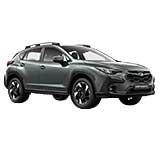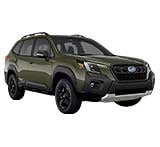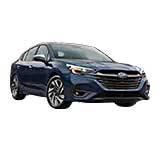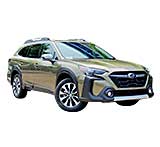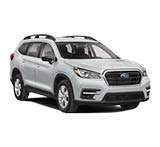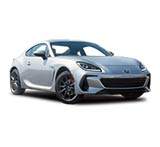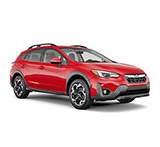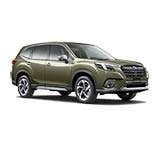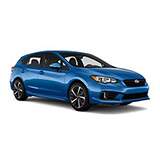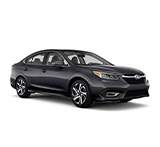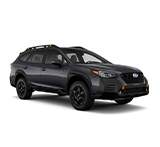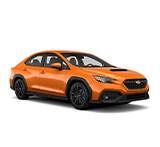Subaru
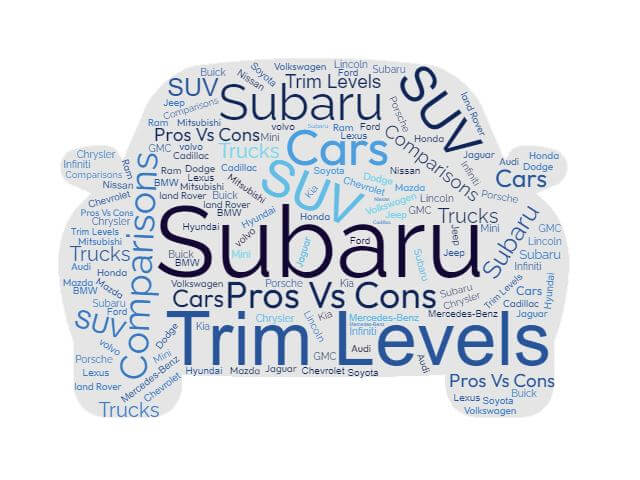
About Subaru
- Favored by the Insurance Institute for Highway Safety,
- Trusted by millions of Snow Belt drivers,
- Often found in the vivisectionist garages of street racers,
- And boasting six consecutive years of record-breaking sales:
Subaru.
Subaru, recognized by Consumer Reports as a Top Auto Maker, is one of the world’s most respected automobile manufacturers. Since its American debut in 1968, it has always appealed to the underdog. What it manufactures are sure-footed AWD vehicles fit for snow, rock and city pavement. What it sells is freedom.
1968: Later in life, entrepreneur Malcolm Bricklin would suffer many failures, including but not limited to the Bricklin SV-1, the EV Warrior and the Yugo GV. But at age 26, untainted by the future, Bricklin made what may have been the best decision of his life. He and Harvey Lamm formed Subaru of America, Inc., and introduced America to its first Subaru: the 360. It achieved 66 mpg, sold like mad in Japan, weighed 1,000 pounds, took 37 seconds to go from 0-60 mph, and was advertised proudly as, “Cheap and Ugly.”
1970: Two years after its American debut, Subaru imported another small, cheap, gawky automobile into the country. It was called the Star. Its humble appearance hid its astonishing engine, a 1100-cc “boxer four.” The engine was quiet, compact, smooth, and offered superior space utilization and a lower center of gravity compared to competitors. To this day, Subaru uses boxer engines for exactly these reasons.
1976: The U.S. National Ski Team picked the Subaru 4x4 as their car of choice, saying, “It’s inexpensive and built to stay that way.”
1977: Building on the GL Coupe and 4WD Station Wagon of recent years, Subaru introduced the BRAT: Bi-drive Recreational All-Terrain Transporter. In order to circumvent the 25 percent Chicken Tax on imported trucks, Subaru built the BRAT as half-car, half-truck. It had the highest gas mileage of any 4x4 vehicle sold in America.
1979: The company fought its image as the auto manufacturer who built cars for the Old Lady who lived in a shoe. Its models were bigger, wider, and enlarged to fit American garages. For the first time, all models were available with four-wheel drive.
1983: Subaru celebrated the sale of its one-millionth car in the United States.
1986: The New York Times called it “the ultimate in jazzy design.” It was the wedge-shaped Subaru XT Coupe, a sleek vehicle with an aircraft-inspired cockpit and flat-six engine. Thanks to its compact powerplant, the XT Coupe boasted one of the lowest drag coefficients in the world: 0.29.
1989: Subaru tried to encroach on the Toyota Camry, Honda Accord and other mainstream automobiles with the Legacy. However, where the Legacy ultimately gained favor was not with Average Joe but with rally car racers, for that year, a Subaru Legacy RS Turbo sedan would set a world record by crossing 62,137 miles at an average speed of 139 mph.
1991: It cost $24,445, which was $8,000 more than any Subaru sold previously. Nevertheless, once buyers shook off their sticker shock, they found the Subaru SVX to be a classy high-performance coupe, Subaru’s first step into luxury territory. Its spoiler was shipped separately to avoid tax penalties. Although discontinued in 1997, the SVX remains a cult favorite with “Subie” fans.
1996: As the second millennium drew to a close, Subaru launched the model upon which it would stake its success: the Outback. A humble station wagon with 7.3 inches of ground clearance and a 2.5-liter boxer engine, the Outback instantly found home in the garages of weekend warriors and everyday adventurers. Its rugged suspension could handle pits and potholes, while its spacious cargo hold could accommodate whatever life threw its way. Not for nothing is the Outback now a staple of American rural life.
2002: Although trusted as a manufacturer of practical, durable vehicles, Subaru had a darker wild side. The Subaru World Rally Team had been competing in the World Rally Championship since 1980. In fact, the year before, the team won the Driver’s Championships. Drawing on its rich heritage of rally racing performance, Subaru unveiled the Impreza WRX sedan and wagon, both could rocket to 60 mph in just over six seconds and spit fire.
2004: Subaru introduced an Impreza WRX on steroids. The WRX STI: two seats, 300 horsepower, and an undying love affair.
2010: Subaru claimed that 90 percent of all vehicles sold since 2000 were still on the road.
2012: For the first time since 2003, the Impreza received a full redesign. Equipped with a 148 horsepower 2.0-liter engine, the compact sedan achieved 36 highway mpg. Reviewers raved over its staunch ride quality, mechanical durability and oodles of standard features. Sales doubled a year later.
2013: After 44 years in the American auto market, Subaru was nowhere near a mid-life crisis, introducing the all-new XV Crosstrek and BRZ.
The XV Crosstrek was made via déjà vu. Subaru added body cladding and ground clearance to the Impreza, the same way it made the Outback from the Legacy, and called its creation the XV Crosstrek. The compact wagon offered many of the same features as the Outback, but in a smaller and more affordable package.
The crème de la crème was the BRZ. Also sold as the Scion FRS, the BRZ was Subaru’s first RWD vehicle since the early 1970s. Professional drivers instantly fell in love. The small two-seat coupe was voted one of the best sports cars for the money – even one of the best that money could buy.
Today, Subaru ranks top in consumer satisfaction, mechanical reliability and all-terrain performance. All Subaru automobiles come with sure-footed Symmetrical All-Wheel Drive and bulletproof boxer engines. The lineup includes two-seat RWD sports cars, AWD crossovers, comfortable commuter sedans and renowned rally racers. But as Subaru points out, “Love. It’s what makes a Subaru, a Subaru.”

